Tracks Through Toronto
Toronto’s first railway was the Ontario, Simcoe & Huron (OS&H), later known as the Northern Railway of Canada. Consequently, the railway was designed to link the three lakes for which it was originally named. Keep reading to time travel back to a time when Toronto had no railways and for an introduction on how the OS&H came to be.
Tkaronto: The place in the water where the trees are standing
The development of railways shaped the City of Toronto as we know it today. In this blog post, we’re exploring the time period that saw the incorporation of the City of Toronto in 1834 and later, the city’s first railway. We’d be remiss not to acknowledge that historical railway canon often begins with industrialization. This leaves out thousands of years of Indigenous history that came before both the invention of railways and Toronto as a city.
Toronto comes from the Mohawk word Tkaronto meaning “the place in the water where the trees are standing”. It is located on the traditional territory of many nations including the Mississaugas of the Credit, the Anishnabeg, the Chippewa, the Haudenosaunee and the Wendat peoples. It is now home to many diverse First Nations, Inuit and Métis peoples. Toronto is covered by Treaty 13 with the Mississaugas of the Credit.

Building Toronto’s First Railway
Before the railways, Canada depended on navigable water routes for transportation of goods and supplies. That being said, these routes were frozen for as much as five months of the year. Overland travel by stagecoach was expensive and uncomfortable, even for the elite few who could afford it.
With the population in Upper Canada rapidly growing, demand for a railway in the area was becoming too great to ignore. As a result, Torontonians eagerly anticipated the promised delights of newfangled rail transportation. Benefits included its easy year-round travel and the timely delivery of needed commodities. To sum up, advantages that were only fantasies before the age of rail.
The Ontario Simcoe & Huron Railway
There were several attempts to bring the railways to Toronto. First, a group of Toronto businessmen had proposed a railway from Toronto to Collingwood as early as 1836, though were unsuccessful due to funding. After that, support for the railway returned in 1848 with the involvement of Frederick Chase Capreol. The British-born businessman from Toronto was successful in establishing the OS&H.
Interestingly, one of the key factors that ensured the OS&H was built was the War of 1812. The War of 1812 was still in the minds of Canadians, having fought it just 30 years earlier. Some American politicians and newspapers were still expressing an inclination to annex Canada, instilling a fear in Canadians at least until the 1870s.
Thanks to precautionary measures the government was taking to avoid a potential invasion from the United States, they were offering a loan to any railway that was built in broad gauge (5’ 6’’) instead of standard gauge (4’ 8½’’). In other words, American railways were built in standard gauge. The difference in gauge between the two countries would prevent a speedy invasion. However, it also meant that it would significantly reduce the speed of Canadian railways handling run-through traffic from the United States.
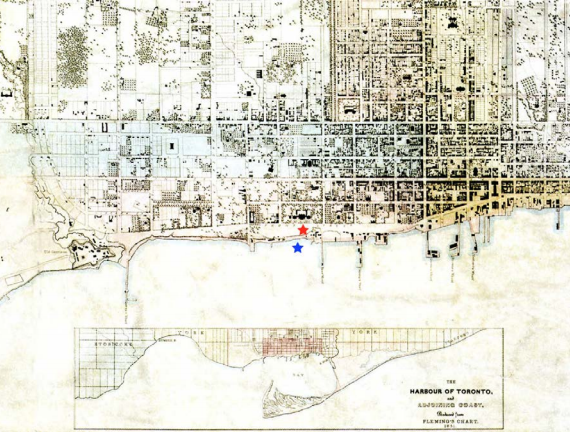
The Best Route
As Toronto’s first railway, OS&H would have the benefits of choosing the best route out of the city, something that would be extremely important as the city develops further. Consequently, unable to access downtown due to the shoreline already being developed on, the OS&H built their station and yards. These were located at a dock area just west of downtown (now an area called Queen’s Wharf). The station was nothing more than a basic wooden structure, hardly fitting for the major destination that Toronto would one day become. The original OS&H wooden station was located close to where the eastern Front Street entrance to Union Station is today.
Toronto’s First Railway Breaks Ground
On October 15, 1851, hundreds of citizens began to gather in front of Toronto City Hall at the corner of Front and Jarvis streets. The occasion? The Ontario, Simcoe & Huron Railway groundbreaking ceremony. A large procession made its way west from old City Hall on Front Street to celebrate the inauguration of a new technology.
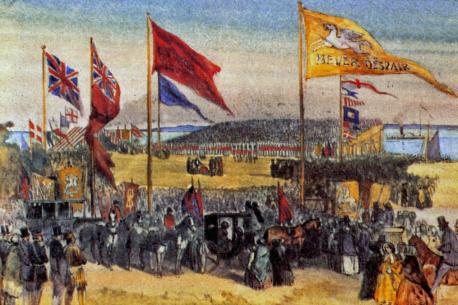
A bandstand was built to seat spectators at the sod-turning event. 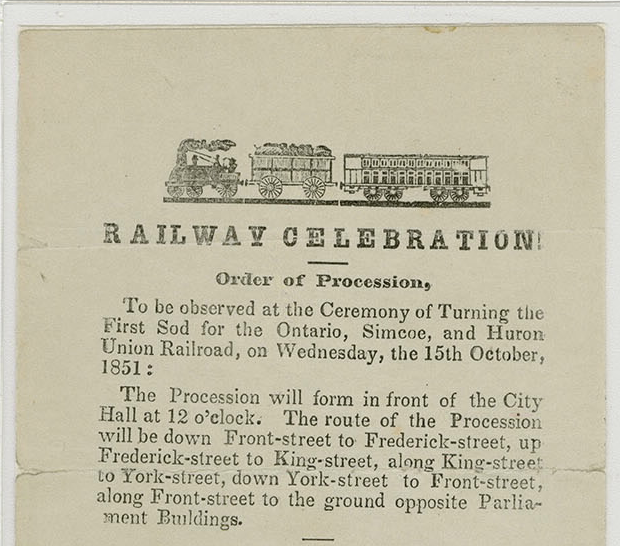
Excerpt from an announcement about the sod-turning event. Toronto Public Library Baldwin collection.
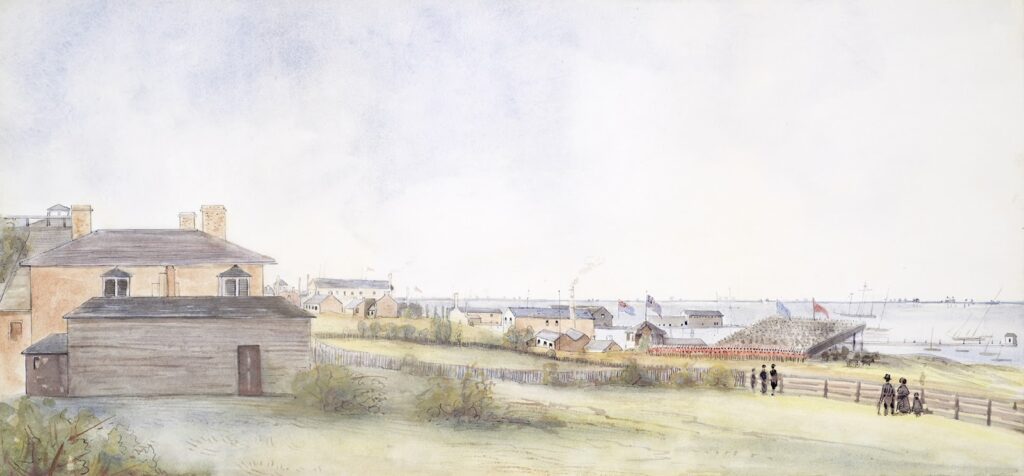
Certainly a notable event, Torontonians gathered at a vacant lot on the south side of Front Street between Simcoe and John Streets. The event was held approximately a two-minute walk from the museum and about where the InterContinental Hotel stands today. In short, this was the beginning of the railway era in Toronto.
In addition to the large crowd, this event was commemorated by a ceremonial turning of the first sod by Lady Elgin (Mary Louisa Bruce), who was also an accomplished artist. During the ceremony, a piece of the sod lifted by Lady Elgin was preserved by Sandford Fleming. He later mounted it in an elaborately carved box and presented it to the Royal Canadian Institute in 1863. The box and its contents were photographed by Historian Derek Boles in 2011 (see below). After that, the ceremony wrapped up that night with a concert performance at St. Lawrence Hall.
Toronto’s First Railway Complete
Next, construction began on the Ontario, Simcoe & Huron Railway (OS&H). It would be the first steam railway to operate in Canada West, as Ontario was then known. The railway officially opened in May 1853 when the locomotive “Toronto” hauled the first steam train in present-day Ontario from Toronto to Machell’s Corners (present-day Aurora).
Stay tuned for part two in our series about Toronto’s early railway days! Sign up for our newsletter to be the first to hear about new blog posts, museum news, and upcoming events.
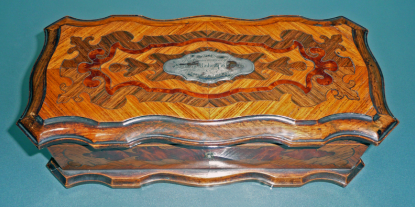
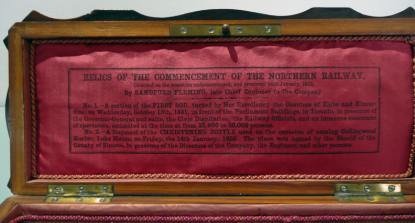
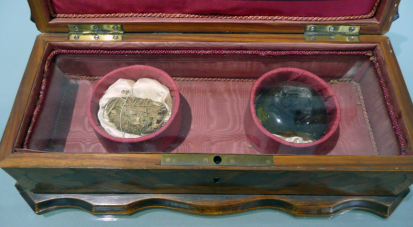
This was an enjoyable read, well researched and well written. Ron Brown